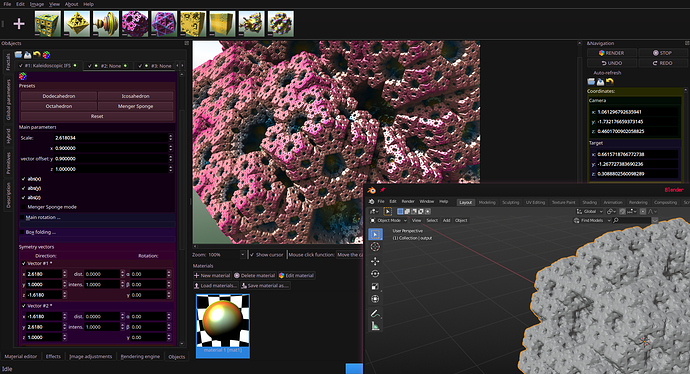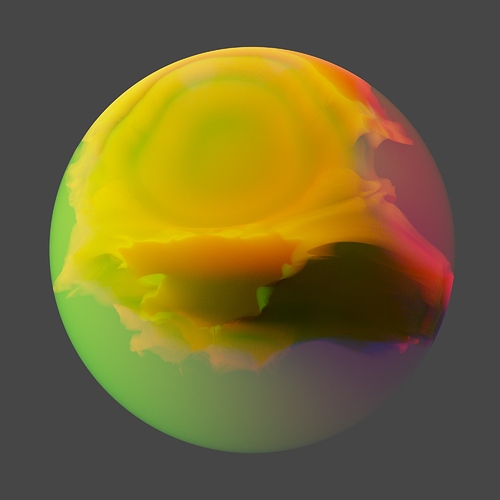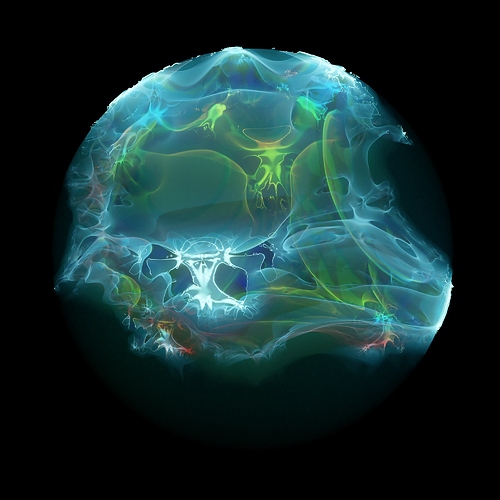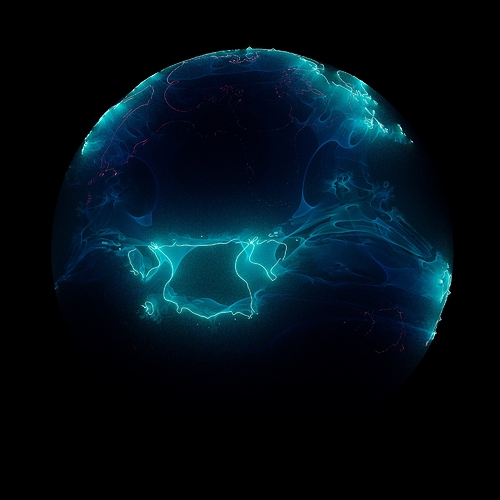Ever seen those 3D fractals by the program Mandelbulb3D, where a simple equation generates a seemingly infinite resolution 3D geometry of fractals? im pretty sure its not actual mesh geometry but some kind of path tracing algorithm that gives the illusion its solid… But if Blender could generate a 3D fractal and convert it to a mesh and then apply any material to the fractals it would open up a whole new world of art to Blender… Ever wanted to just take one of those fractals and put a glass material on it or animate it with lights or put your own material texture on it or integrate it into your scene as a mesh?
3D fractals were used in the CGI for the Guardians of the Galaxy II movie extensively to give an alien world/dimension kind of look.
You can sorta mimic 3d fractal art with shaders and math nodes but I know what you mean It be nice to simple add_on like mandlebulb3d
Probably not what you are after but the tissue addon is very interesting. Not exactly “easy” but great fun!
This one seems to be able to export 3d mesh, but I never try it myself.
Edit: Look like it work, have to export as .ply
But in the screenshot, I export at 1000 resolution, to get a good resolution, you might need 4000-5000 resolution, but that will probably create object worth 100-150MB.
Edit2: Resolution of 4000 create about a 1.3GiB of stanford file, loading it on blender would take probably more that 20GiB ram.
So the inherent problem seems to be if we want to convert a large detailed fractal into a mesh object it would be huge with millions or billions of polygons? Where as programs that generate fractals with shaders and raytracing or pathtracing, are limited because its not real geometry…
I think it is possible, but not with importing model into blender. It have to be generated in blender and use adaptive subdivision to create higher level of fractal. This probably have to be written from scratch to use in blender.
@Thesonofhendrix
Fractals can be done with volumetrics: https://youtube.com/watch?v=WSQFt1Nruns
If you are determined you can implement more formulas like Mandelbox, Julia and Sierpiński sets.
Just beware, that render times for volumes can be long - depending on your shader setup.
I followed the tutorial, made some tweaks along the way and rendered with Cycles:
In last two I used selective emission on both surface and volume.
That would make for an amazing plasma globe type object within a scene, if you have the processing power.
Well, you can, althought this project looks a bit abandoned
https://twitter.com/leondenise/status/1195302494978674689
You can download it here
I have my use for that shader in the future. The best thing is that its just a shader, so you can apply it to completly different mesh. And if you don’t use emission the rendering is much faster.
We have new volume object type based on OpenVDB in Blender, so maybe in the future it will be possible to create volume fractals with shaders and then convert them into mesh.
Wow it really look a scanner of a monkey head (the third picture)
Well, I guess that after some exposure to Blender you start to see Suzanne everywhere.
I’ll give you a hint - with low iterations Mandelbulb does not resemble bulb at all.
Interesting.
I don’t understand if this is just an addon, or it also needs external binaries. In the Blender folder the addon seems to be there, but there are also three external files. Also there is that “rust” folder, which I’m not sure if compiling and build is necessary.
If you read the replies I asked and that’s what I’ve been told.
https://twitter.com/leondenise/status/1267196258982256641
I didn’t try until now that I saw this thread and I couldn’t make it work, the addon loaded, I could selected, but I’m not sure if I’m not loading the scene as I should… I will try once again when I have more time… If you discover something tell us!
abstract-fractal-artwork
mandelbulb-fractals-in-blender-eevee 2.8
happy cl
Do you have a blender file for your finished results? It looks very interesting, but the tutorial cannot be followed because at 7mins he just goes into turbo mode fastforward, and the finished blend file with the YT video has an extremely low quality result in it.




